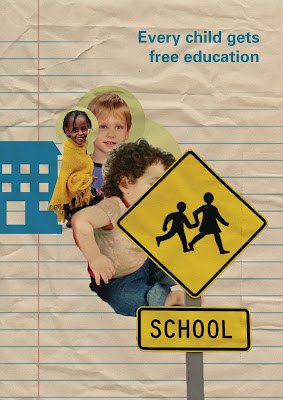Topic research -
Working on my topic, creating something simple and easy to understand and follow, with an idea that is going to provoke an action from people and viewers - sticking with them over time.
http://climate.nasa.gov/effects/
Global climate change has already had observable effects on the environment. Glaciers have shrunk, ice on rivers and lakes is breaking up earlier, plant and animal ranges have shifted and trees are flowering sooner.
forecasts a temperature rise of 2.5 to 10 degrees Fahrenheit over the next century.
By the end of this century, what have been once-in-20-year extreme heat days (one-day events) are projected to occur every two or three years over most of the nation.
Global sea level has risen by about 8 inches since reliable record keeping began in 1880. It is projected to rise another 1 to 4 feet by 2100. This is the result of added water from melting land ice and the expansion of seawater as it warms.Sea level rise will not stop in 2100 because the oceans take a very long time to respond to warmer conditions at the Earth’s surface. Ocean waters will therefore continue to warm and sea level will continue to rise for many centuries at rates equal to or higher than that of the current century.
The Arctic Ocean is expected to become essentially ice free in summer before mid-century.
http://climate.nasa.gov/interactives/climate-time-machine
- an interactive tool surrounding climate change and what will happen over time.
http://www.theatlantic.com/business/archive/2012/10/how-to-make-sure-the-next-generation-is-better-off-than-we-are/263579/
- Specific article on next generations and how the world will be in the future...
It doesn't need to be like this. There are immediate steps that can -- and should -- be taken by governments to reduce the real and present danger of declining living standards.
It is about initiating proper reforms, setting sensible priorities, sticking to multi-year commitments, and nurturing a more enabling environment.
We also need to do more to help the next generation stand a better chance of overcoming the real threat of declining living standards - and this is even before we take into account critical sustainability issues that have to do with the multiple abuses of our environment and natural resources.
http://www.nationalreview.com/article/425746/social-inequality-matters-much-or-more-economic-inequality-oren-cass
- Social in-equality / Economic in-equality
Presidents that provoke action:
This poster is interesting as it provokes thought and you to think about what leaders are saying and whether they are just pumping toxic thoughts into our minds, the simplistic texture with the style of drawing is a different technique which may have been hand created.
This poster is reliant on type and strong typography to draw people in to read and understand the writing of the poster, there is some nice simplistic illustrations growing off the type showing the difference between the problem and the solution.
This illustration is interesting as it draws on the familiar icon and creates the idea that this may happen if we don't make a change. It is a nice way to present a poster with a photograph and nice illustration over the top. The background textures is another layer in the composition which makes the poster have more impact.
A very interesting style which I could use a similar technique for my ideas, the composition is very balanced and has interesting thoughts of rich vs. poor, which could be the same dynamic I could use for my composition with the idea of now on top and below being what is left for the future.
This is an interesting food for thought, you plug things in and then don't think where you're actually plugging into and what is actually being caused by electricity use and how your small actions contribute to a larger picture.
"He loves me, he loves me not?" I though as soon as I saw this image... It is thought provoking and I like how it relates to something as a child you would be able to relate to.
This is another illustration which I could use the style of and adapt to fit better to my theme and idea, I like how it shows over time and develops through the steps of animals etc.
This is an interesting poster showing how we are treating the environment and how as a consequence of this animals are indeed suffering, and becoming extinct.
Food for thought.. Racial in-equalities. Concentrating on what is the same and what isn't different..






























